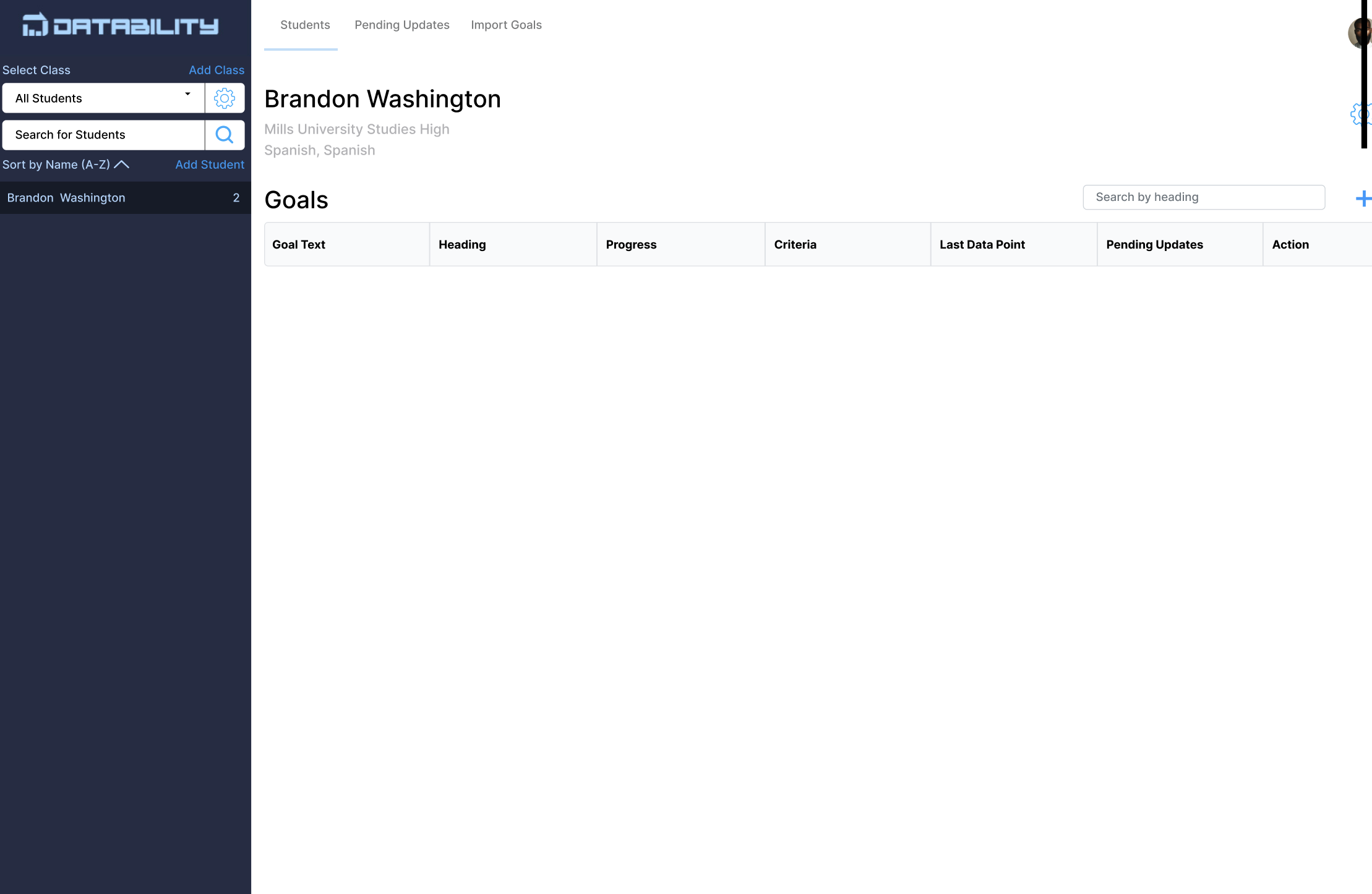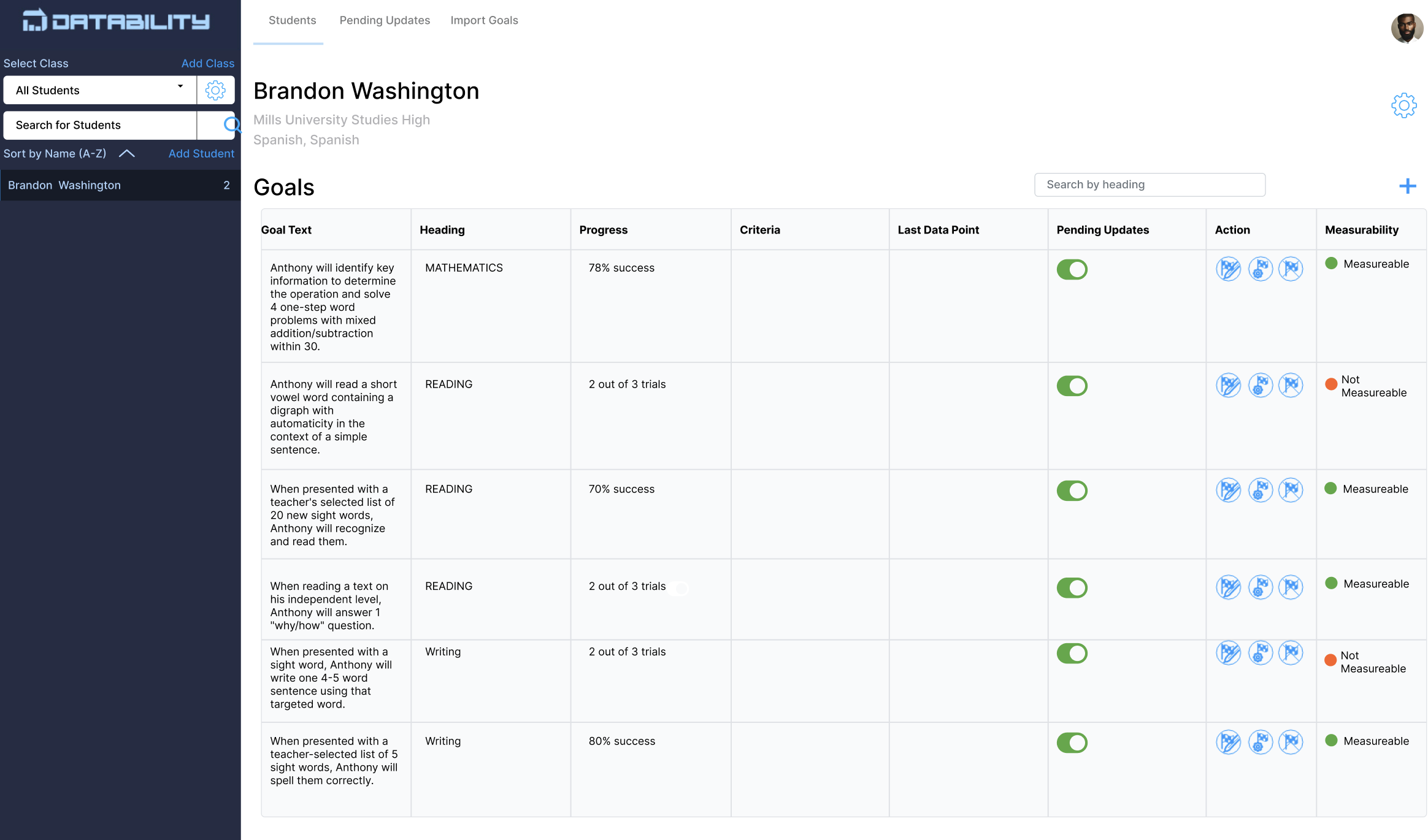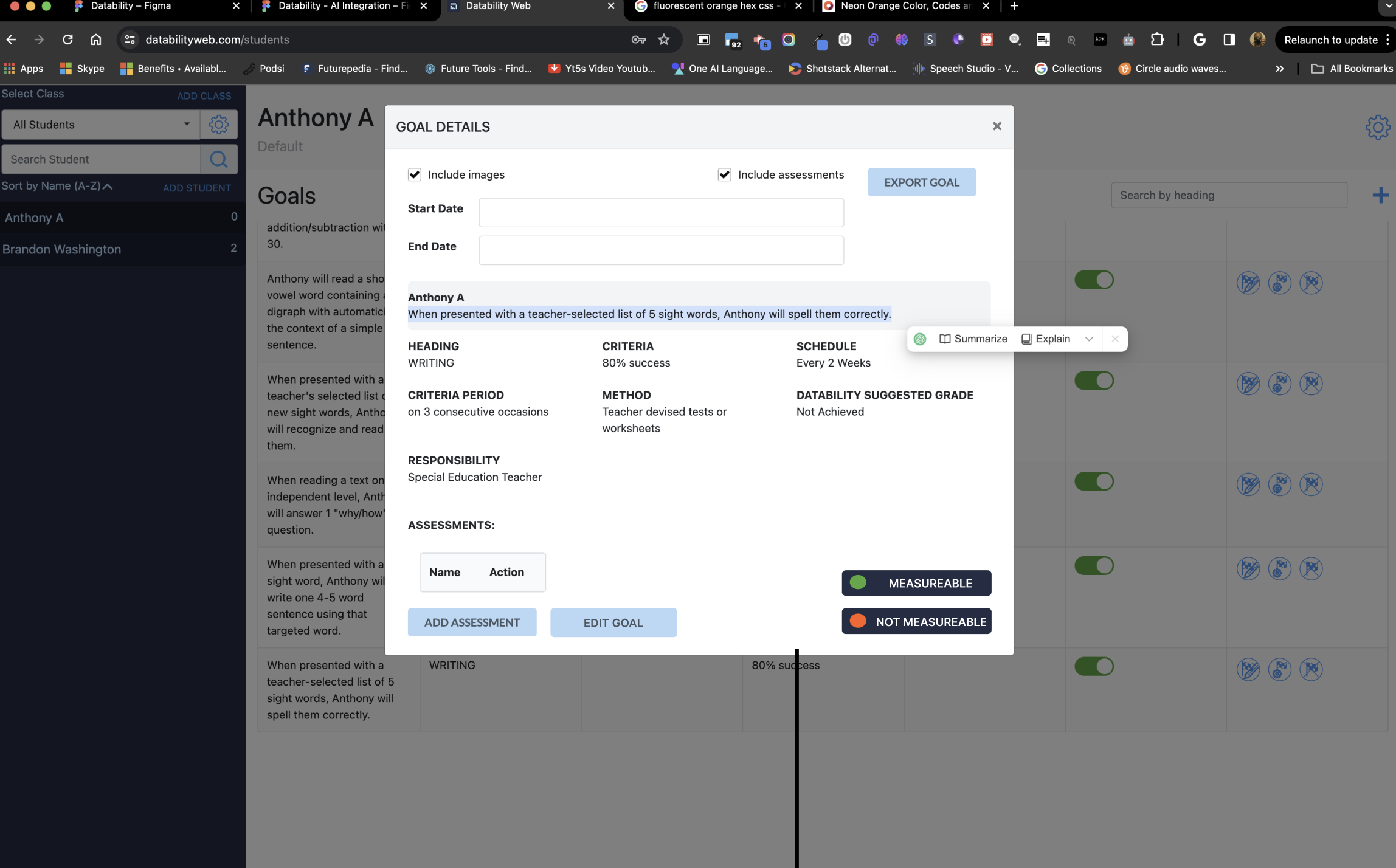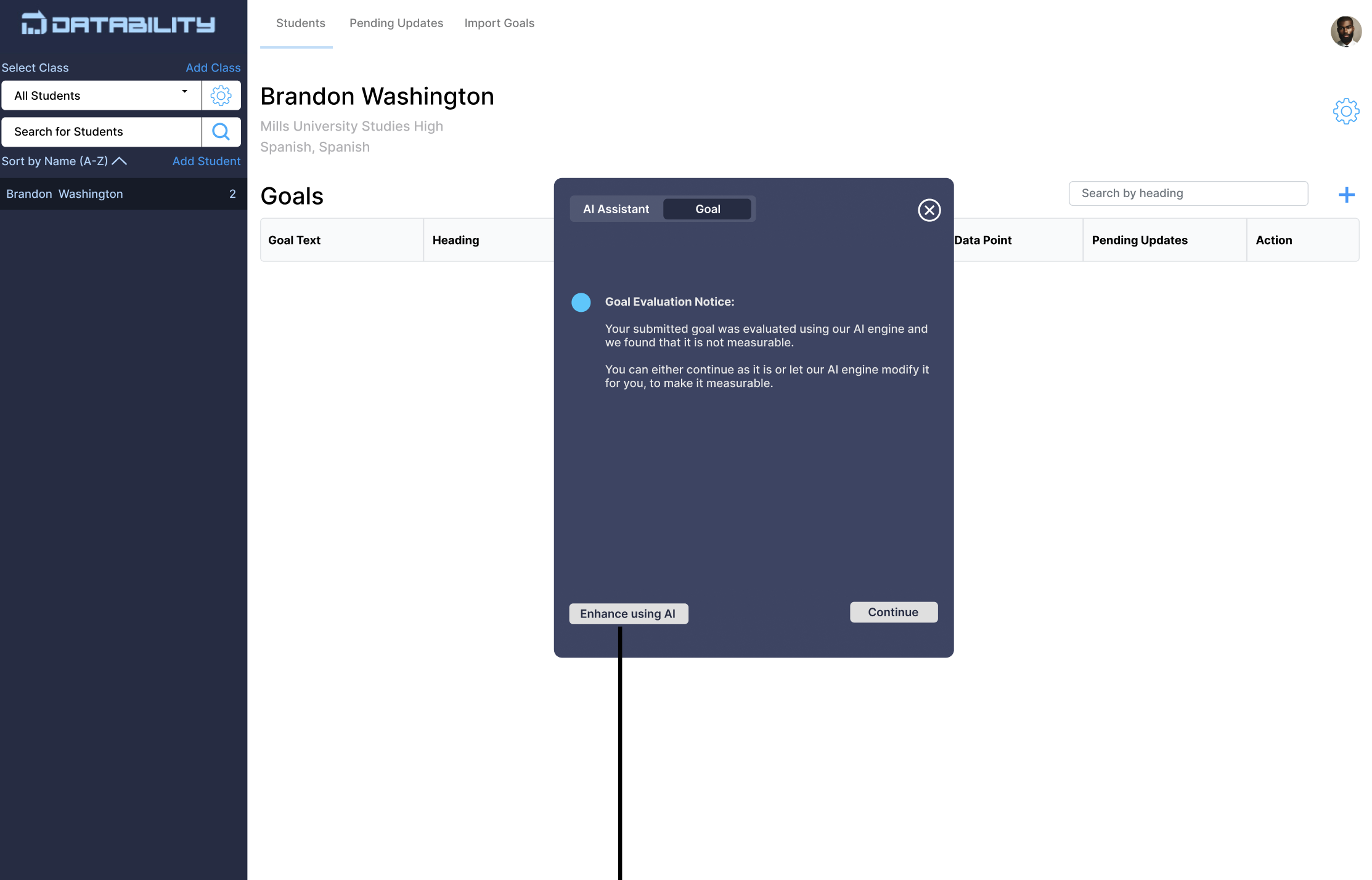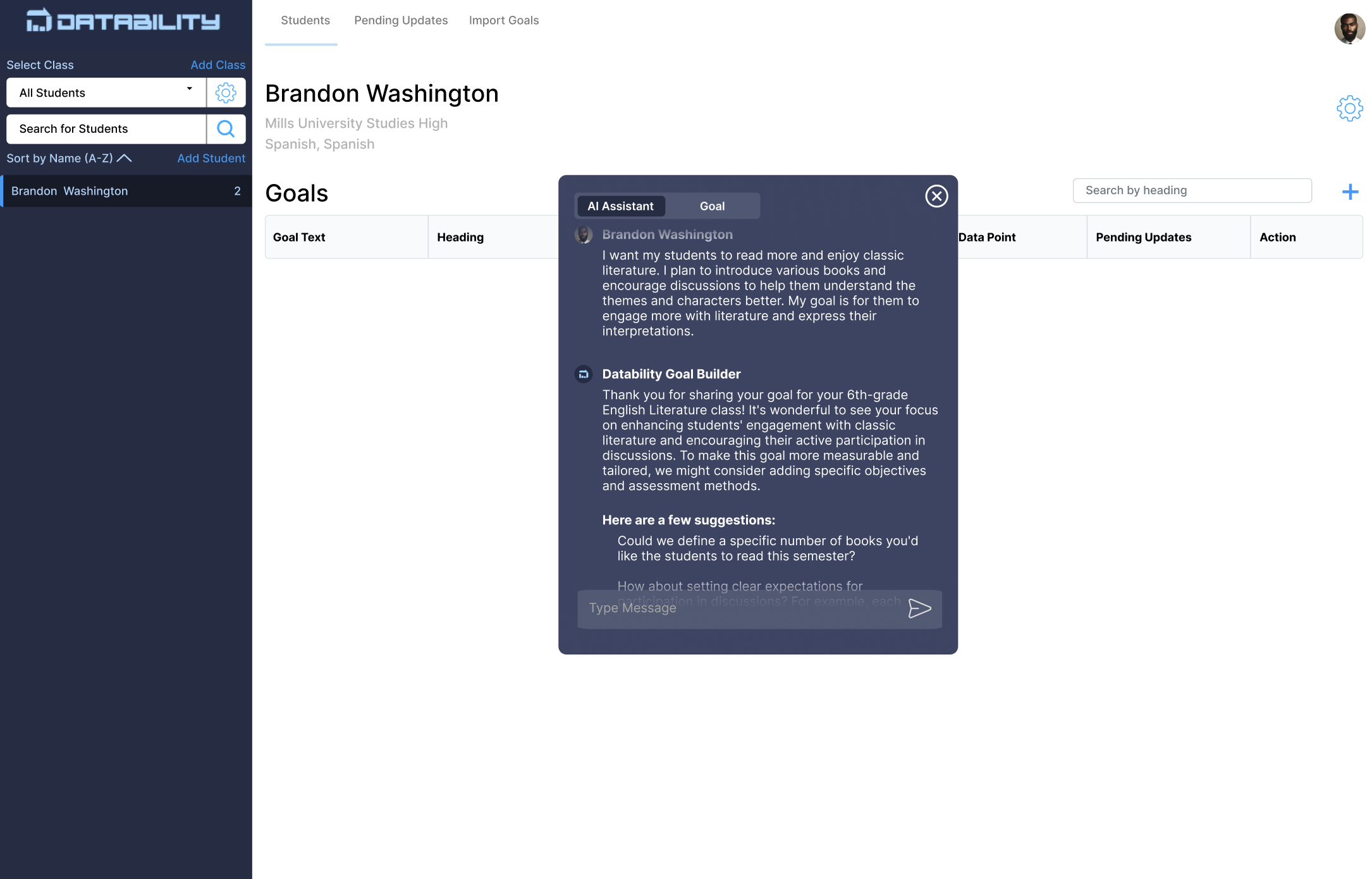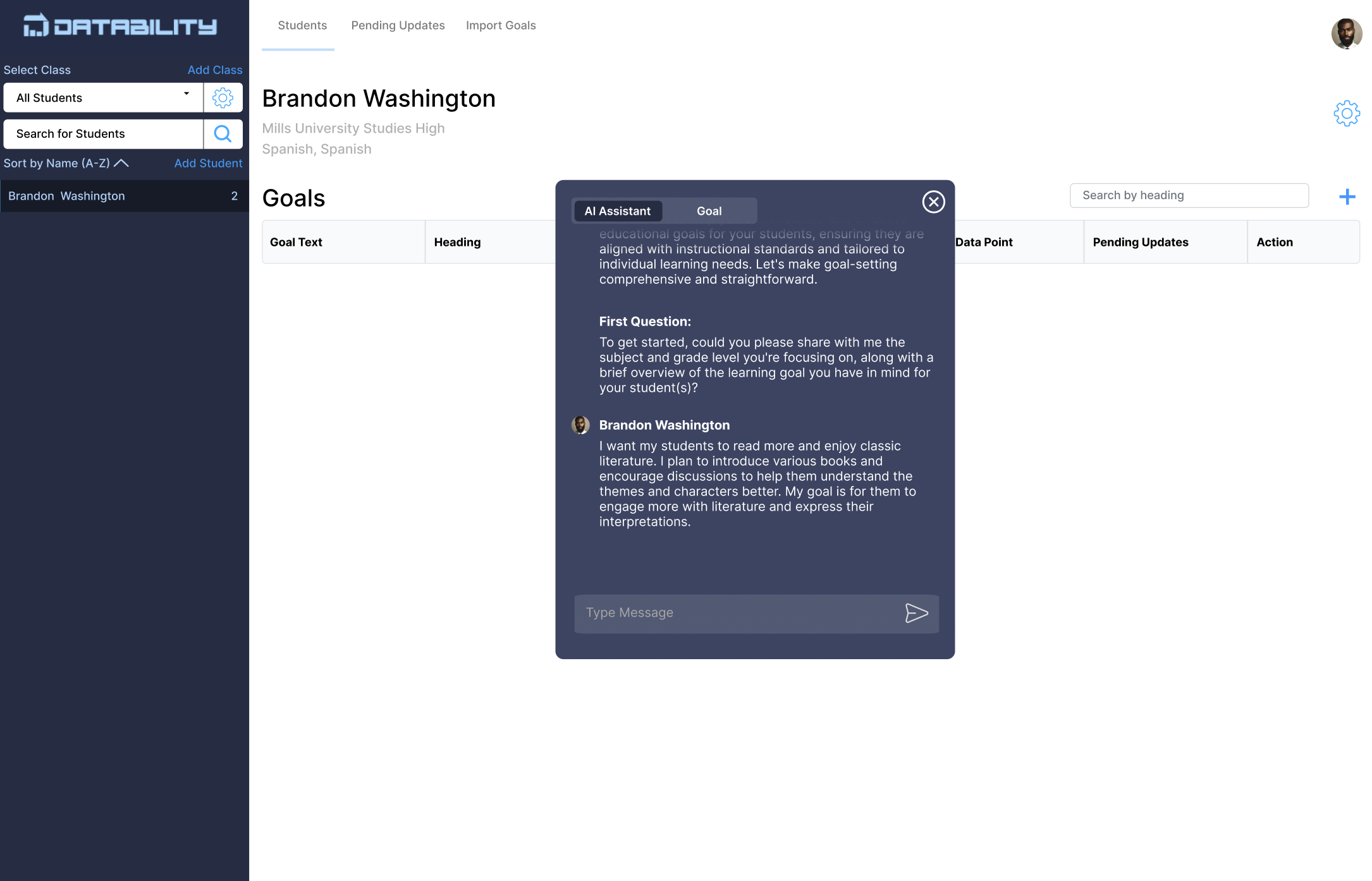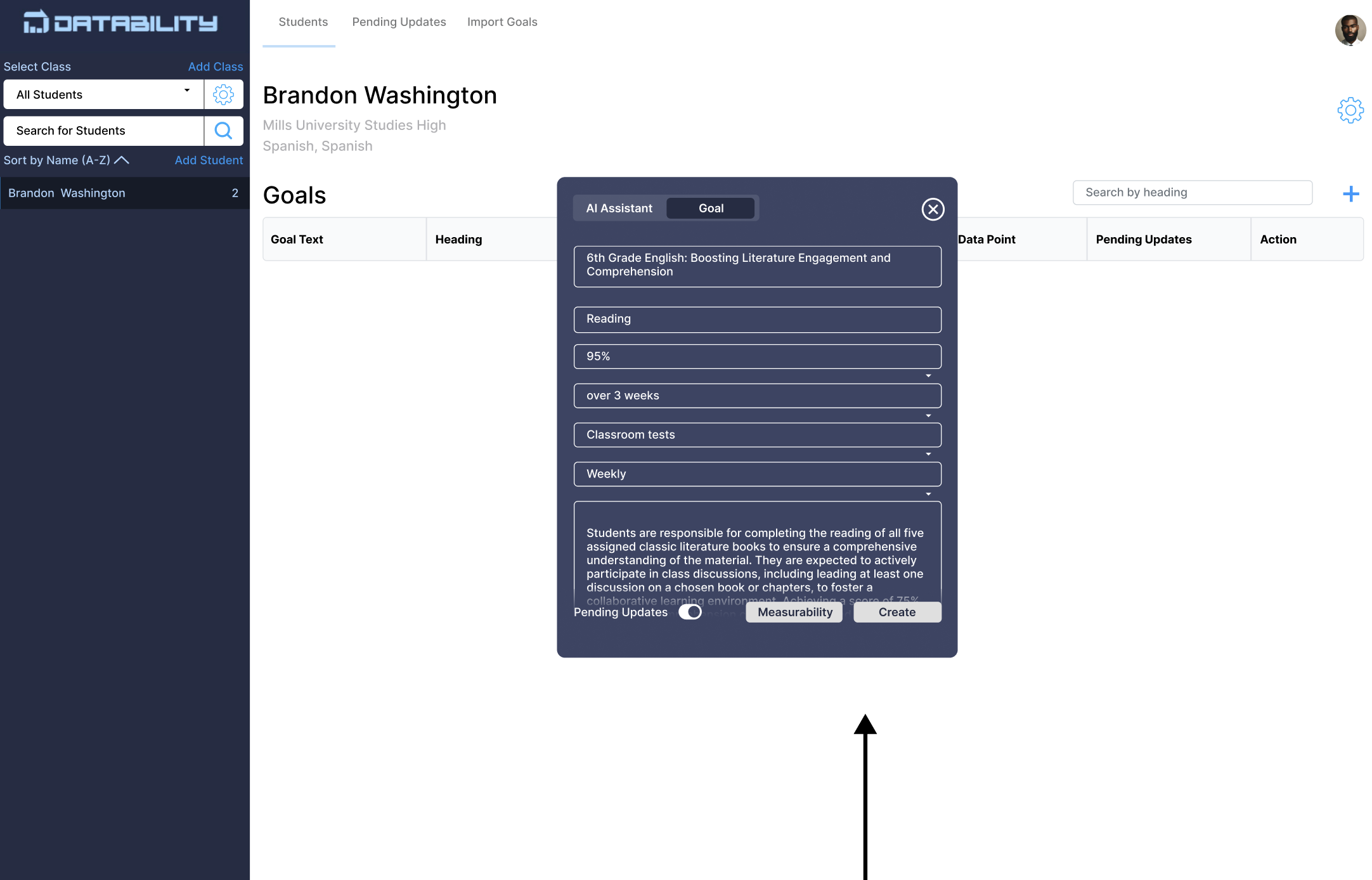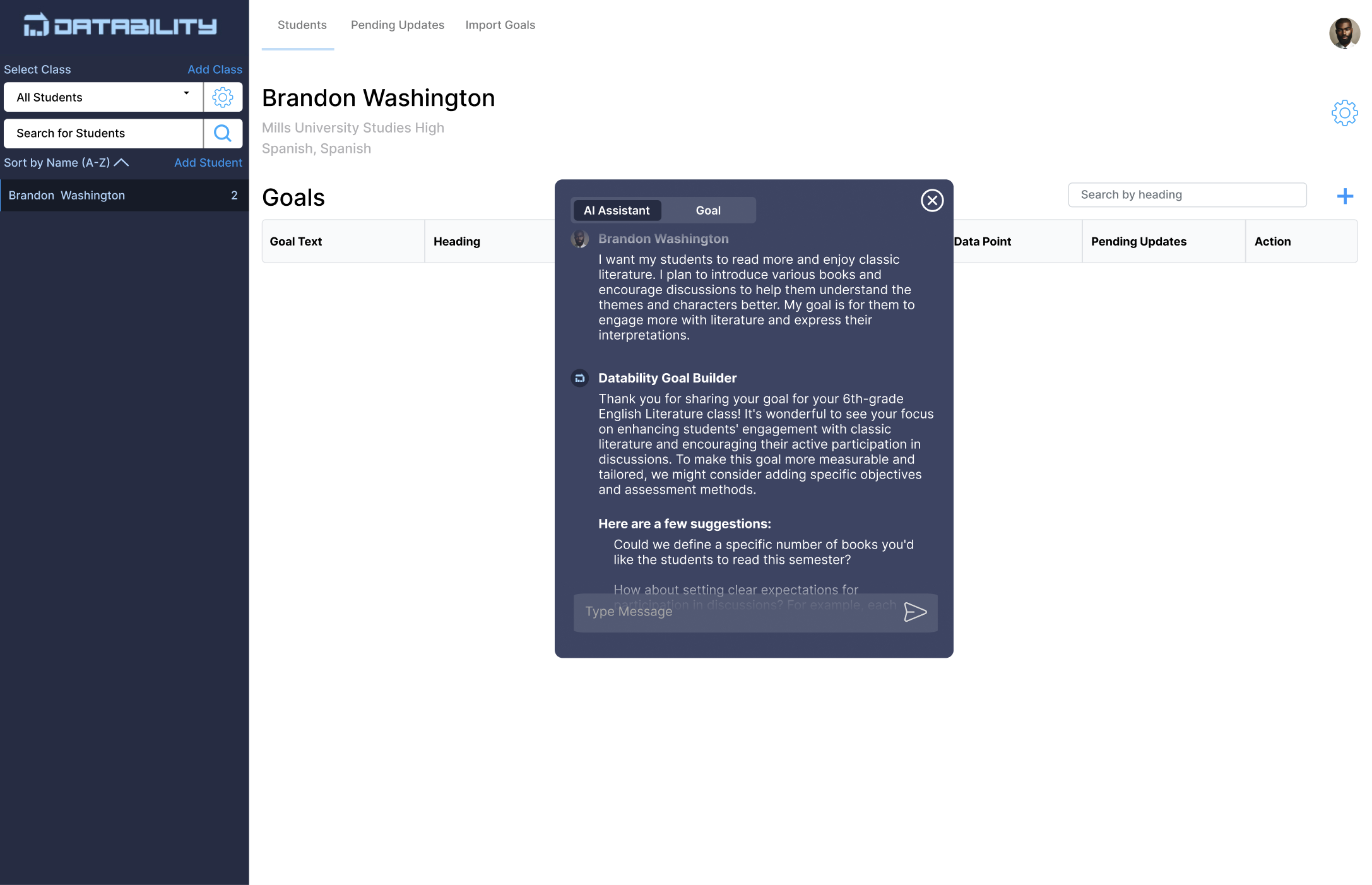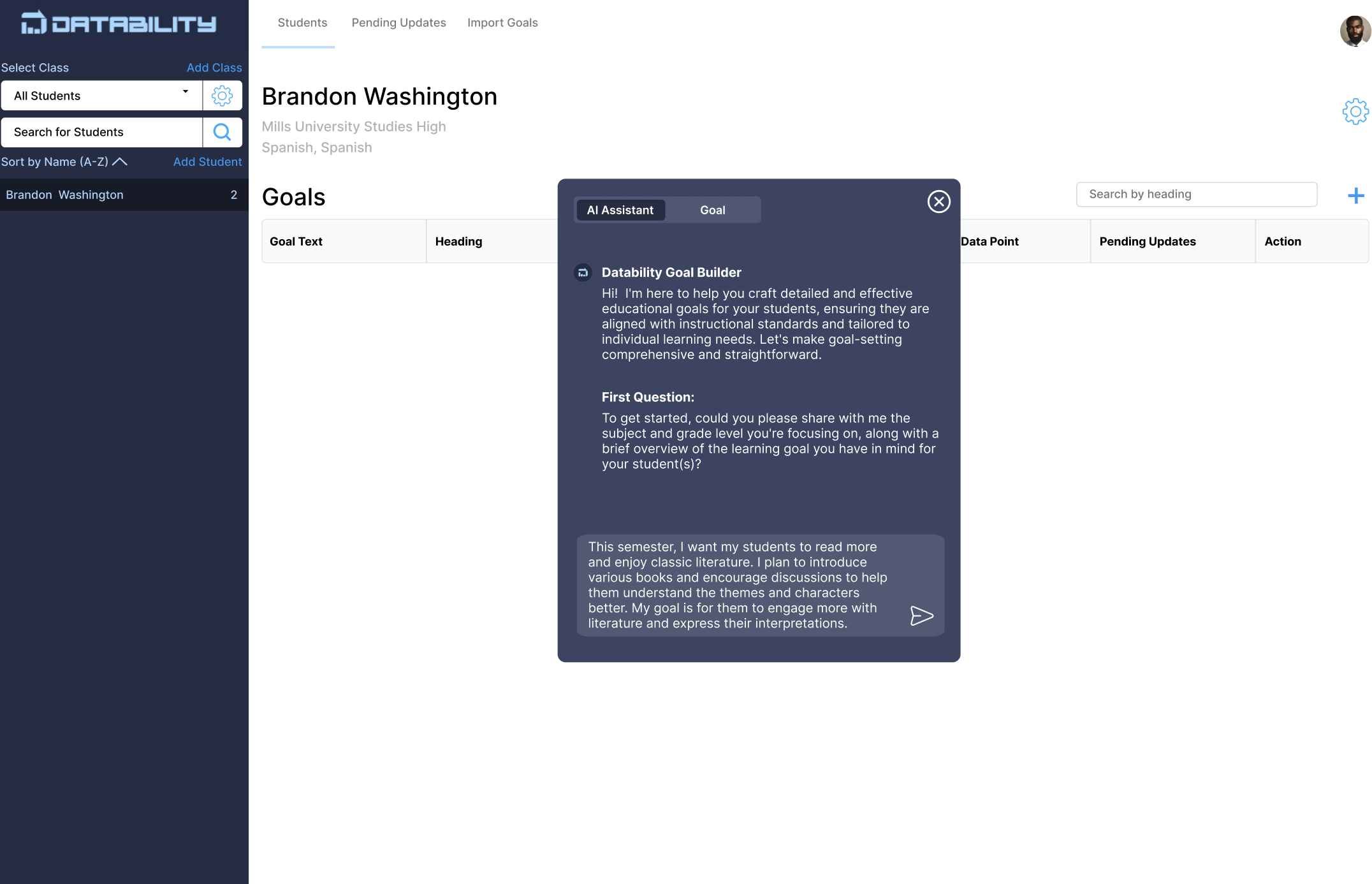Enhancing Datability with AI Goal Assessment Chatbot
Project Overview
Company: EduTech Innovations
Project Objective:
To integrate an AI chatbot into Datability, enabling users to evaluate the measurability of educational goals, suggest alternative goals, and create new goals. The chatbot would provide feedback on goals input by educators, ensuring they adhere to SMART criteria (Specific, Measurable, Achievable, Relevant, Time-bound).
Challenges and Solutions
1. Design Integration and User Experience
Challenge:
Integrating the chatbot required new design elements and an enhanced user flow. Ensuring the design was seamless and intuitive for users was crucial.
Solution:
The design team updated and tested various design iterations, incorporating feedback to finalize the user flow. Specific elements, such as a “measurability” button, were added to allow users to check goal measurability easily.
Implementation:
– Design Updates: Designs were iterated based on feedback. Importing goals into the chatbot interface and incorporating buttons (e.g., “Check Measurability”) were key design changes.
– User Flow: Ensured the chatbot’s integration was simple and intuitive, enabling easy access to goal checking functionalities.
2. API Integration and Backend Configuration
Challenge:
Integrating the AI chatbot involved significant backend development, including configuring environment variables and ensuring seamless server connections.
Solution:
Backend developers worked on setting up the API integration, particularly focusing on socket connections between the React app and the Sails.js server. They also tackled issues with API keys and model access for GPT-4.
Implementation:
– Environment Setup: Followed guidelines in the project’s repository to configure local environments for both frontend and backend.
– API Key Management: Attained and configured appropriate API keys that support the GPT-4 model.
– Socket Connections: Resolved connection issues leveraging collaborative problem-solving with development and support teams.
3. Training the Chatbot Model
Challenge:
Ensuring the chatbot could accurately assess and generate SMART educational goals required robust training data and fine-tuning the AI model.
Solution:
Gathered detailed descriptions and well-crafted sample goals to train the chatbot. Created a comprehensive prompt for the GPT-4 model to follow when evaluating and generating goals.
Implementation:
– Prompt Creation: Developed a detailed prompt for GPT-4, specifying how to transform educational inputs into SMART goals.
– Evaluation and Adjustment: Regularly tested outputs, adjusting training inputs as necessary to enhance accuracy.
4. Managing Project Milestones and Communication
Challenge:
Maintaining clear communication and timely progress updates was a major challenge, particularly with several developers and stakeholders involved.
Solution:
Adopted a structured approach to communication and reporting, ensuring daily updates were provided. This included setting clear expectations and utilizing tools like pull requests for code reviews.
Implementation:
– Daily Updates: Ensured daily updates from the development team to track progress and address issues swiftly.
– Pull Requests: Worked in small phases, utilizing pull requests for code reviews to ensure quality and facilitate client feedback.
– Stakeholder Communication: Regularly communicated with stakeholders, addressing concerns and aligning the team on project goals.
Results
The integration of the AI chatbot into Datability significantly enhanced the platform’s ability to support educators in creating and evaluating educational goals. Although some technical and communication challenges arose, proactive problem-solving and structured development processes facilitated the successful implementation of this feature.

